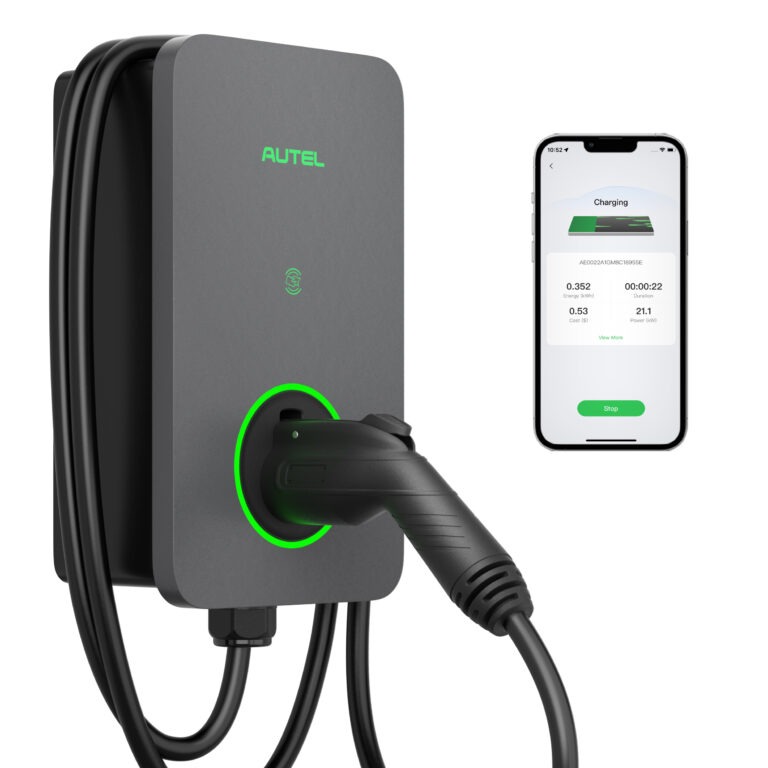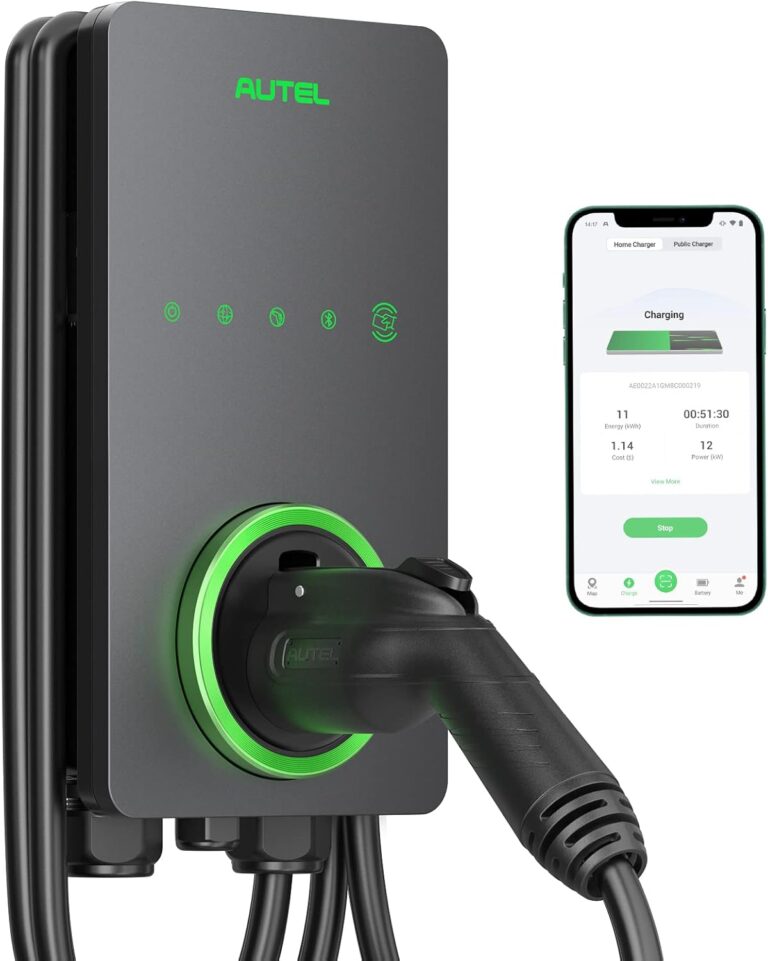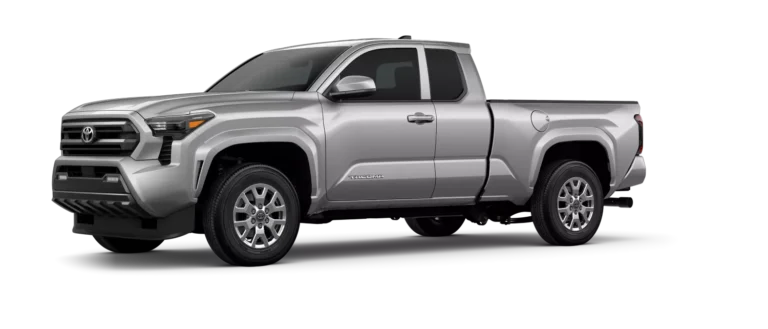
Best Back Up Camera For Cars!
- Last Updated
- December 26, 2024
Your Ultimate Guide To The Best Back Up Camera For Cars!
Welcome to our comprehensive guide on the best backup cameras for your car.
We’ve narrowed down your back up camera shoppng listt to 3 of the best options available. The best overall, the best plug and play, and the best wireless option. We did think about including the best budget option, but these cameras seem to be so affordable, it was a bit moot.
Each product includes a quick snapshot of six key stats, like image resolution, field of view, night vision capability, display size, waterproof rating, and installation type, so you can easily compare features at a glance.
Best Back Up Camera
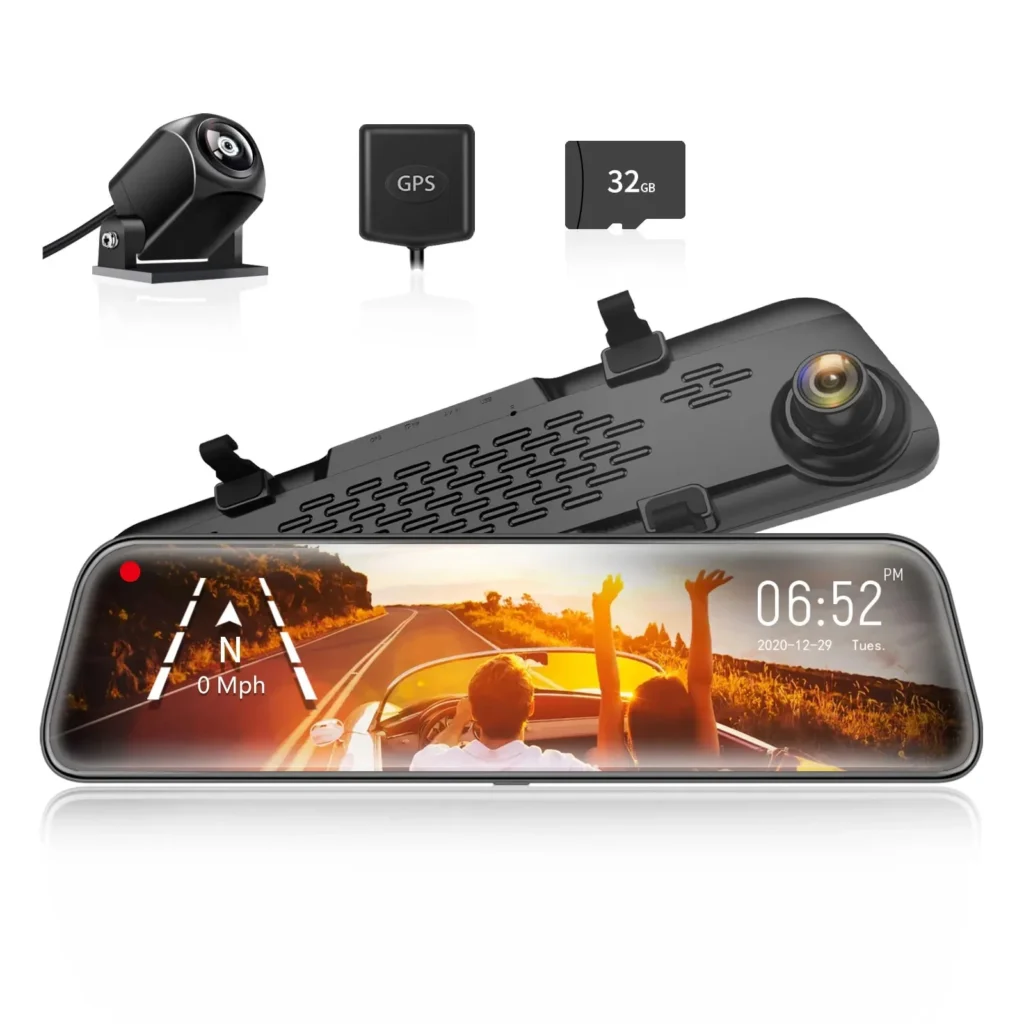
WOLFBOX G840S
- Resolution: 2160p (4k)
- Field Of View: 140 degrees
- Night Vision: Yes
- Display Size: 12"
- Waterproof: Yes
- Installation: Hardwired
- Reviews: 11,000+ (4.3/5)
The Wolfbox G840S is a comprehensive mirror dash cam and backup camera system engineered to enhance driving safety and visibility. With its advanced features, this device offers drivers a robust solution for monitoring their vehicle’s surroundings.
Highlights: The Wolfbox G840S delivers exceptional visual capabilities with:
- 4K front camera resolution (2160p)
- 1080p rear camera resolution
- Ultra-wide 170° front and 140° rear lens angles
- Enhanced night vision using a Starvis sensor and 6-glass lens technology
Functionality: This mirror dash cam provides multiple smart features designed to improve driving experience:
- Dual-lens display allowing simultaneous front and rear view monitoring
- GPS tracking with external antenna
- Adjustable rear view settings (vertical and horizontal image flip)
- G-sensor for impact detection
- Loop recording functionality
- 12-inch display with 2.5D curved screen for optimal viewing
Installation and Compatibility:
The Wolfbox G840S is engineered for versatility, supporting installation on various vehicle types including:
- Passenger cars
- Pick-up trucks
- RVs
- Vehicles with roof-mounted camera options
- 4K front and 1080p rear resolution for clear imaging.
- Night vision with Sony Starvis sensor enhances low-light performance.
- GPS tracking and parking mode for added safety.
- G-sensor locks crucial footage during incidents.
- Rear camera cable may be too short for larger vehicles.
- 12-inch size may obstruct sun visors in compact cars.
- Rear camera mount quality could be improved.
Best Plug and Play Back Up Camera
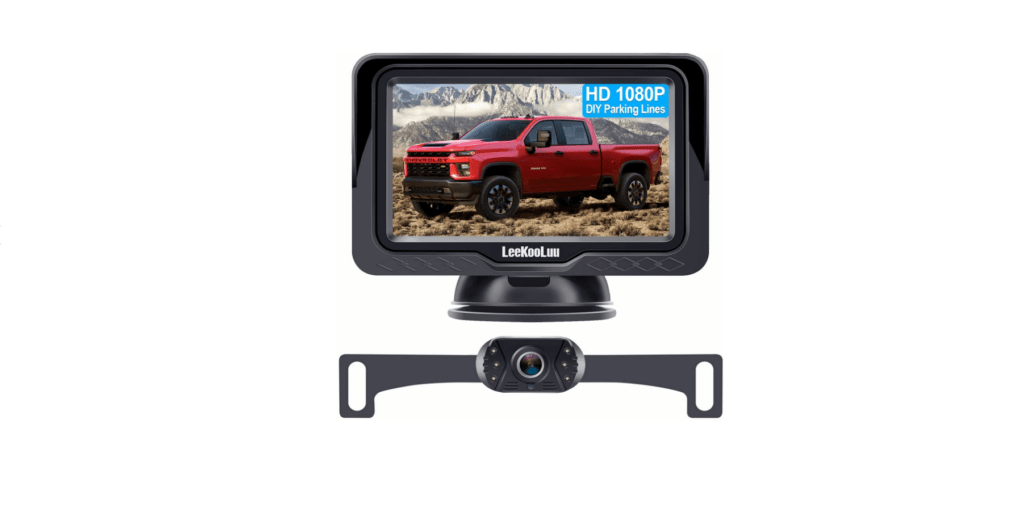
LeeKooLuu Back Up Camera
- Resolution: 720p
- Field Of View: 149 degrees
- Night Vision: Yes
- Display Size: 4.3"
- Waterproof: Not Specified
- Installation: Wired
- Reviews: 800+ (4.4/5)
The LeeKooLuu LK3 is a versatile backup camera system designed to enhance vehicle safety and parking precision for various vehicle types including cars, trucks, vans, and SUVs.
Highlights: The LeeKooLuu LK3 offers comprehensive visual capabilities:
- 1080p HD video resolution
- 4.3-inch LCD display monitor
- 149-degree wide-angle lens
- 6 white LED lights for night vision
- CMOS optical sensor technology
Functionality: This backup camera provides multiple smart features:
- Adjustable parking guidelines
- Customizable guideline width and position
- Ability to flip image between front and rear view
- Multiple power connection options (reverse lights or 12V power source)
- Magnetic mounting bracket with 360-degree rotation
Installation and CompatibilityThe LeeKooLuu LK3 supports flexible installation methods:
- License plate mounting options
- Windshield or dashboard placement
- Wired connection with included 4-pin video cable
- Compatible with various vehicle types
Included In The Box:
- 4.3-inch LCD monitor
- Backup camera
- Suction cup mount
- Multiple power cords
- Cigarette lighter adapter
- Comprehensive installation wiring kit
- 1080p HD resolution with night vision for clear visuals in low light.
- Adjustable parking guidelines for precise maneuvering.
- Easy plug-and-play setup with multiple mounting options.
- Compatible with various vehicle types, including SUVs and trucks.
- Smaller 4.3-inch monitor compared to other options.
- Not 4k.
- Installation may require effort for cable management.
Best Wireless Back Up Camera
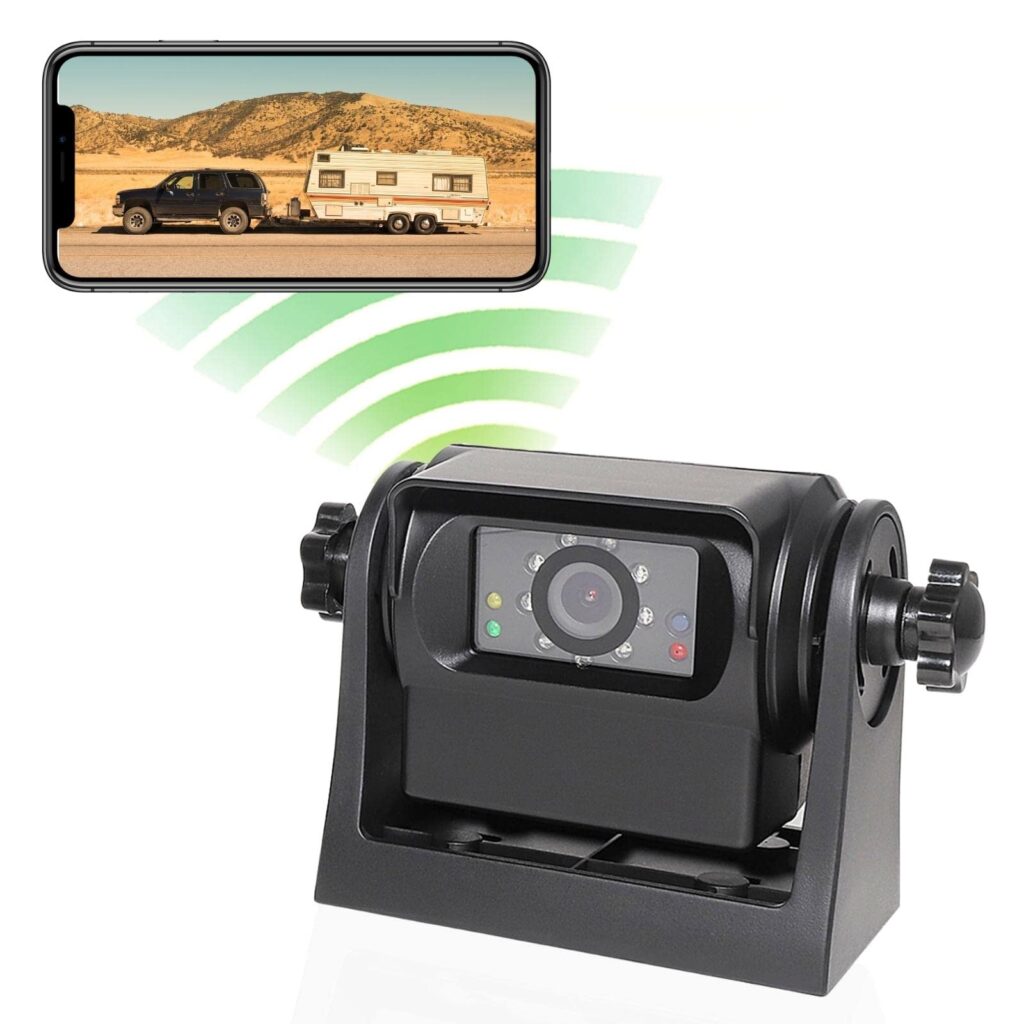
EWAY Wireless WiFi
- Resolution: 1080p
- Field Of View: 150 degrees
- Night Vision: Yes
- Display Size: 5 Inches
- Waterproof: Yes (IP68P)
- Installation: Magnetic
- Reviews: 250+ (4.2/5)
The EWAY Wireless WiFi Backup Camera is a versatile and portable solution designed to enhance safety and convenience for various vehicle types, including trucks, RVs, trailers, and campers.
Highlights: The EWAY Wireless WiFi camera offers:
- 720p HD video resolution
- 150-degree wide-angle lens
- Night vision capability with 9 infrared lights
- IP68 waterproof rating for durability in harsh conditions
- WiFi connectivity with a range of up to 50 feet
Functionality: This backup camera system provides several smart features:
- WiFi connectivity for seamless integration with smartphones and tablets
- Rechargeable battery with up to 8 hours of continuous use
- Magnetic base with four powerful magnets for secure attachment
- Real-time image transmission to mobile devices via dedicated app
- Optional parking guidelines for easier maneuvering
Installation and Compatibility: The EWAY Wireless WiFi camera supports flexible installation methods:
- Magnetic mount for quick attachment to any metal surface
- No wiring required for installation
- Compatible with iOS and Android devices (except Google Pixel, Kyocera, and Motorola phones)
- Suitable for vehicles up to 35 feet in length
Included In The Box
- WiFi backup camera
- USB charging cable
- User manual
- Mounting accessories
- Wireless installation with magnetic mount for flexibility.
- Rechargeable battery eliminates the need for constant power supply.
- IP68 waterproof rating ensures durability in harsh weather conditions.
- Wide-angle lens reduces blind spots effectively.
- Signal reliability issues in some setups.
- App setup can be confusing, impacting ease of use.
- Image quality may not match higher-end cameras.
Best Back Up Camera For Cars - Buyers Guide
Image Quality
A backup camera should display at minimum 480p resolution, though many newer models offer 720p or 1080p HD quality. Resolution affects how well you can spot small obstacles like toys or curbs.
Color accuracy matters too – you want true-to-life colors that help distinguish objects.
Camera sensors with CMOS technology typically provide better image quality than CCD sensors.
The optimal viewing angle ranges between 120-170 degrees – cameras with less than 120 degrees might miss objects at the corners, while those over 170 degrees often create noticeable distortion.
Low Light Performance
Look for cameras with infrared (IR) LEDs, which provide night vision capability. The number of IR LEDs affects performance – 6-8 LEDs typically provide adequate illumination for passenger vehicles, while larger vehicles might benefit from 8-12 LEDs.
Some cameras use ambient light sensors to automatically adjust brightness and contrast. LUX rating indicates low-light sensitivity – a lower LUX number means better performance in darkness. Cameras rated at 0.1 LUX or lower perform well in near-dark conditions.
Wired vs Wireless and the In Between
Wired systems typically use RCA cables for video transmission and need to connect to your reverse light circuit for power. Installation involves running cables through your vehicle’s body panels.
Wireless systems use radio frequencies (usually 2.4GHz or 5.8GHz) to transmit video signals. The 5.8GHz frequency typically experiences less interference but has shorter range. Digital wireless systems offer better resistance to interference than analog ones.
Signal range varies significantly:
- Wired systems: Limited by cable length, typically 15-25 feet.
- Wireless systems: Usually effective up to 30-70 feet, but metal bodies and electrical interference can reduce this.
- Digital wireless systems: Often maintain better signal quality at longer ranges.
Installation
Professional installation typically costs $50-200 depending on vehicle complexity. DIY installation requires:
- Basic tools (wire strippers, crimpers, test light)
- 2-4 hours of work
- Understanding of vehicle electrical systems
- Ability to remove and reinstall trim panels
- Comfort working with wiring harnesses
Key installation steps include:
- Mounting the camera.
- Running power and video cables.
- Connecting to reverse lights.
- Setting up the display unit.
- Testing and adjusting the camera angle.
Durability and IP Ratings
Look for IP ratings that indicate water and dust resistance:
- IP67 or higher means the camera can handle temporary submersion.
- IP65 indicates protection against water jets.
- IP54 offers basic splash resistance.
Operating temperature ranges matter too – good cameras function from -30°F to 175°F. UV-resistant housing prevents sun damage and fading. Metal housing typically outlasts plastic, though quality ABS plastic can work well.
Parking Lines
Two main types exist:
- Static lines – Fixed guidelines that don’t move
- Dynamic lines – Guidelines that curve as you turn the steering wheel
Some systems offer:
- Distance indicators (usually in feet or meters)
- Color-coded zones (green/yellow/red) for distance warnings
- Adjustable line positioning
- Option to toggle lines on/off
Screen Size and Compatibility
Common screen sizes and their uses:
- 4.3″: Compact but may strain eyes
- 5″: Good balance for most vehicles
- 7″: Easier viewing but takes more space
- 9″+: Better for larger vehicles but requires significant mounting space
Resolution considerations:
- Minimum 480×272 pixels for basic visibility
- 800×480 recommended for clear viewing
- 1024×600 or higher for HD cameras
Price
Price ranges and typical features: $30-75: Basic cameras, often with minimal features like:
- Standard definition
- Basic night vision
- Limited weather resistance
- Simple static guidelines
$75-150: Mid-range options
- HD resolution
- Better low-light performance
- Weather-sealed housing
- Dynamic guidelines
- Digital wireless capability
$150-300+: Premium systems
- 1080p resolution
- Advanced night vision
- Multiple camera support
- Smartphone connectivity
- Recording capability
- Advanced parking assistance features
How To Install A Back Up Camera
1. Wolfbox G840S
Stand Out Features:
- HD 1080P camera with a 7-inch split-screen display
- Support for dual-camera setup (front and rear views)
- IP69 waterproof rating
- Built-in recording function with loop recording capability
- Night vision with 6 LED lights
Installation & Connectivity:
- Hardwired system requiring connection to reverse lights
- Includes mounting brackets and 33ft cable
- Takes about 2-3 hours to install for most vehicles
Performance Notes:
- Camera functions well in low light conditions
- Display shows clear, detailed images
- Guidelines adjust with steering
- Recording activates automatically when vehicle starts
Limitations:
- Installation complexity may require professional help
- Some users report initial setup challenges
- Screen brightness could be higher for very sunny days
Price Range: $130-160
2. LeeKooLuu
Stand Out Features:
- 720P resolution camera with 4.3-inch monitor
- Digital wireless transmission
- IP68 waterproof rating
- 6 infrared lights for night vision
- Adjustable parking lines
Installation & Connectivity:
- Wireless signal transmission up to 65ft
- Still requires power connection to reverse lights
- Simpler installation than fully wired systems
- 20-30 minute typical DIY installation time
Performance Notes:
- Good image clarity in daylight
- Reliable wireless connection in most conditions
- Monitor automatically turns on in reverse
- Effective night vision range of about 15ft
Limitations:
- Occasional signal interference in dense areas
- Lower resolution than some competitors
- Smaller screen size
- Limited viewing angle adjustment
Price Range: $50-80
3. EWAY Wireless Wifi
Stand Out Features:
- 1080P HD camera with smartphone connectivity
- WiFi transmission system
- IP69K waterproof rating
- 8 LED lights for night vision
- App-based viewing and recording
Installation & Connectivity:
- Connects to smartphone via dedicated app
- Requires power connection to reverse lights
- Wireless range up to 100ft
- Compatible with both iOS and Android
Performance Notes:
- High-quality video feed through app
- Records directly to phone storage
- Multiple viewing angle options
- Adjustable parking guidelines through app
Limitations:
- Relies on smartphone as display
- App must be running for camera to function
- Some users report app connectivity issues
- May experience lag on older phones
Price Range: $90-120
Installation Considerations for All Models:
- Basic tools needed: wire strippers, crimpers, screwdrivers
- Access to reverse light wiring required
- Mounting hardware included with all models
- Weather resistance varies by model
- Professional installation recommended for less experienced users
Wolfbox G840S vs LeeKooLuu vs EWAY
Durability Comparison:
- WolfboxG840S: Most robust build quality, highest weather resistance
- LeeKooLuu: Good weather resistance, standard build quality
- EWAY: Good weather protection, relies more on proper installation
Night Vision Comparison:
- WolfboxG840S: 6 LEDs, clear night vision up to 25ft
- LeeKooLuu: 6 LEDs, effective range about 15ft
- EWAY: 8 LEDs, night vision range up to 30ft
Image Quality Comparison:
- WolfboxG840S: 1080P, wide viewing angle, good contrast
- LeeKooLuu: 720P, standard viewing angle, decent contrast
- EWAY: 1080P, adjustable viewing angle, good detail
Best Back Up Camera For Cars under $15
- RAAYOO 420TVL CMOS camera: $13-15
- Standard definition (not HD)
- Basic night vision capability
- Requires wired installation
- Includes only camera unit (no display)
- AUTO-VOX Basic: $12-15
- Simple mounting design
- Basic waterproofing
- Limited viewing angle
- Requires separate display purchase
Important Considerations:
I notice several consistent issues with cameras in this range:
- Limited durability in harsh weather
- Basic image quality, often grainy
- May require additional purchases (display screen, longer cables)
- Installation components might be incomplete
- Often lack parking guide lines
- Night vision may be very limited
Buying Recommendation: While these cameras can provide basic backup visibility, I recommend saving up for a $30-50 camera if possible. At the $15 price point, you may end up spending more fixing issues or replacing a failed unit. Many of these very low-cost cameras also have reliability concerns that could affect safety.
If you absolutely need to stay under $15, look for:
- A clear return policy
- Basic waterproofing (at minimum)
- Included mounting hardware
- Power cable long enough for your vehicle
- Compatibility with your existing display (if you have one)
I Need a Backup Camera, what's best/cheapest?
We recommend the Wolfbox G840S. This back up camera has a large 12 inch display that serves as both a rearview mirror and a high def screen. Just be careful with the type of car you want to install this in, as the 12″ size might bit a tad too big for some compact cars.
It has a resolution of 2160P (4k) for the front camera, and a 1080P camera for the rear. As you can already make out, this is a dual camera system, that allows for simultaneous recording from both the front and rear
Installation is pretty straightforward, as the G840S replaces your existing rearview mirror and connects easily with a hardwired setup. The touch screen also makes it simple to navigate through settings and views. it also boasts essential safety features like G-sensor emergency video locking and parking monitoring, ensuring you have crucial evidence in case of incidents. Given its impressive features at a competitive price point, the Wolfbox G840S stands out as one of the best options for anyone in need of a dependable backup camera.
Backup Camera FAQ
How to Choose a Backup Camera for Your Car
- Image quality: Look for cameras with high-resolution sensors (CCD or CMOS) for clear images.
- Field of view: Choose a camera with a wide-angle lens, typically between 120-180 degrees.
- Low-light performance: Opt for cameras with good low-light capabilities, such as those with LED or infrared illumination.
- Mounting options: Select a camera that can be easily mounted on your vehicle, such as license plate or surface-mount style.
- Weather resistance: Ensure the camera has adequate waterproofing (IP67 or higher) for outdoor use.
Wired vs. Wireless Reverse Cameras
Wired cameras generally offer more reliable connections and better image quality. Wireless cameras are easier to install but may experience interference. Choose based on your installation preferences and vehicle layout.
Backup Camera vs Rear View Camera
Backup cameras activate when the car is in reverse, while rear view cameras can provide a constant view of the rear. Backup cameras are primarily for parking assistance, while rear view cameras can be used for general driving awareness.
LED vs. Infrared Backup Cameras
LED cameras use visible light to illuminate the area, which can be seen by the human eye. Infrared cameras use invisible light that only the camera can detect, providing better stealth in low-light conditions.
Cost of Adding a Backup Camera
The cost can vary widely, typically ranging from $100 to $500 for parts and professional installation. DIY installation can reduce costs significantly.
AutoZone Backup Camera Installation
AutoZone does not typically offer backup camera installation services. They sell cameras and related equipment, but installation is usually done elsewhere.
DIY Backup Camera Installation
Yes, you can install a backup camera yourself if you’re comfortable with basic automotive wiring. Many cameras come with DIY installation kits and instructions
Is Adding a Backup Camera Worth It?
Adding a backup camera can significantly improve safety by reducing blind spots and helping prevent accidents while reversing. It’s especially useful for larger vehicles or those with limited rear visibility.
Best Place to Put a Backup Camera
The most common and effective location is above the license plate. This provides a good view of the area directly behind the vehicle.
Automatic Activation of Reverse Camera
Most backup cameras are wired to activate automatically when the vehicle is shifted into reverse. This is typically done by connecting the camera’s power supply to the reverse light circuit.

Article By: Dale Ogden
Dale is a recognized expert in the automotive industry, known for his expertise in automotive asset management and consulting.
As the founder of Check Your Spec and former Forecast Manager at CAP HPI (equivalent to Kelley Blue Book in the USA) he made significant contributions to the development of forecasting strategies and depreciation models for internal combustion engines, hybrid, and electric commercial vehicles in the UK.
With over two decades of experience, Dale pioneered EV forecasting models that are now used by leading manufacturers.
His work has also produced residual values for over 10,000 new vehicles.
Related Posts
Unlock accurate valuations for your car’s features in seconds – find out what your options are worth today and in the future.

